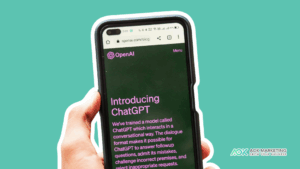
Whether you’re a seasoned marketer or a small business owner taking your first steps into the digital advertising world, Google Ads can be a powerful tool in driving targeted traffic to your website and increasing conversions. However, the platform is complex, and to truly harness its potential for maximizing your Return on Investment (ROI), you need to stay updated with the latest strategies and best practices. 2024 is no different—what worked yesterday might not yield the same results tomorrow, so adapting and optimizing your campaigns is crucial.
Let’s delve into the top 13 strategies to help you refine your Google Ads campaigns and boost your ROI in 2024.
1. Embrace Automation with Smart Bidding
Smart Bidding strategies use machine learning to optimize your bids for conversions or conversion value in each auction—a feature known as “auction-time bidding”. Employing strategies like Target CPA (Cost Per Action), Target ROAS (Return On Ad Spend), or Maximize Conversions can help you get the best value out of your budget. However, for these strategies to work effectively, ensure you have enough conversion data, setting up clear goals and letting the algorithms learn and optimize over time.
2. Leverage Audience Segmentation
Audience segmentation has always been a cornerstone of successful advertising. In 2024, this principle remains crucial. Utilize audience information such as demographics, interests, and past website interaction to create highly targeted campaigns. Google’s detailed targeting options allow you to tailor your ads to people more likely to be interested in your offer, thus enhancing your chances for a higher ROI.
3. Optimize for Voice Search
As voice-activated devices become more prevalent, optimizing for voice search is imperative. These searches are often longer and more conversational. Ensure your keywords and content align with the natural speech patterns of users asking questions aloud to improve chances of capturing this growing segment.
4. Prioritize Mobile Optimization
Mobile optimization is non-negotiable—your ads must be designed with mobile users in mind. This means not just mobile-responsive landing pages, but also ad copy and calls-to-action (CTAs) that cater to the mobile user experience. Given the increasing time people spend on their phones, neglecting mobile optimization could mean missing out on a significant portion of your audience.
5. Take Advantage of Visual Shopping Ads
For e-commerce businesses, visual shopping ads are a must as they display a product’s image along with the title, price, and store name right on the search page. With the rise of visual platforms and technology, shopping ads can significantly boost your CTR (Click-Through Rate) and conversion rates by attracting buyers with a visual element.
6. Utilize Local Service Ads for Local Businesses
If you’re running a local business, Local Service Ads can be particularly beneficial. These ads appear at the top of the search results and showcase essential information like hours, ratings, and proximity to the user. In a mobile-first world where local search is dominant, this can be an incredibly effective way to drive local traffic and leads.
7. Implement Negative Keywords Wisely
Negative keywords prevent your ads from being triggered by irrelevant queries. By regularly updating your list of negative keywords, you can refine your traffic, ensuring that only interested users—those more likely to convert—are clicking on your ads. This is a crucial practice for minimizing wasted spend and improving campaign performance.
8. Experiment with Different Ad Formats
Do not stick to one ad format. Google Ads offers various types including video, display, and app ads, among others. By experimenting and analyzing the performance of different ad types, you can discover what resonates best with your target audience and focus your efforts there.
9. Focus on Ad Extensions
Ad Extensions expand your advertisement, making it more prominent and providing additional information to users. This may include links to specific parts of your website, phone numbers, or additional product information. These extensions improve visibility and can drastically improve your click-through rate.
10. Track and Use Data Analytics
Data is king in the digital marketing realm. With robust tracking and analytics, you can dive into the specifics of what’s working and what isn’t. By using Google Analytics in conjunction with Google Ads, you can gain insights into customer behavior and adjust your strategies accordingly.
11. Continuously Test and Optimize Ad Copy
To maximize ROI, you must continuously test and tweak your ad copy. A/B testing can reveal the messages that resonate most with your audience. By iterating on what works and discarding what doesn’t, you can gradually improve your results.
12. Enhance User Experience on Landing Pages
No matter how compelling your ads are, if users land on a poor webpage, they are likely to leave without converting. User experience is absolutely critical; your landing pages should be fast, user-friendly, and aligned with the ad’s message to encourage conversions.
13. Balance Automation with Human Insight
While the power of automation is indisputable, it’s important to balance it with human insight. Stay involved with your campaigns to inject creativity, emotion, and strategy that automation alone cannot achieve. Combine technology-driven strategies with the nuanced understanding of your audience for the best outcomes.
Conclusion
In the dynamic landscape of online advertising, staying ahead of the curve is essential for maximizing ROI. As we step into 2024, the strategies outlined in this article represent the forefront of Google Ads optimization. By embracing automation carefully, focusing on audience segmentation, optimizing for voice search and mobile, utilizing the latest ad types and formats, implementing negative keywords, leveraging extensions, and regularly mining data analytics, advertisers can hone their campaigns for peak performance. Just as important is the continuous testing of ad copy and the enhancement of user experience on corresponding landing pages. Finally, remember that while technology offers incredible tools for efficiency and targeting, the irreplaceable human touch is what connects with customers on a deeper level. Combining these approaches will give you a robust Google Ads strategy that is both current and effective for the year 2024.
With these strategies in mind, you are well-equipped to dive into Google Ads with a fresh perspective, ready to tackle the challenges of the new year. Use these tips as your roadmap to improved performance and a maximized ROI from your Google Ads campaigns.
About The Author
Marketing Team
The AOK Marketing Team is a diverse group of amazing individuals driven to help all of our clients succeed. Great people are everywhere, and we believe that people should control their workday, their work environment, and where they live. We have team members in 9 countries: United States, Canada, Egypt, Belgium, Ireland, Australia, India, Pakistan, and Hong Kong.
How can we help you?




